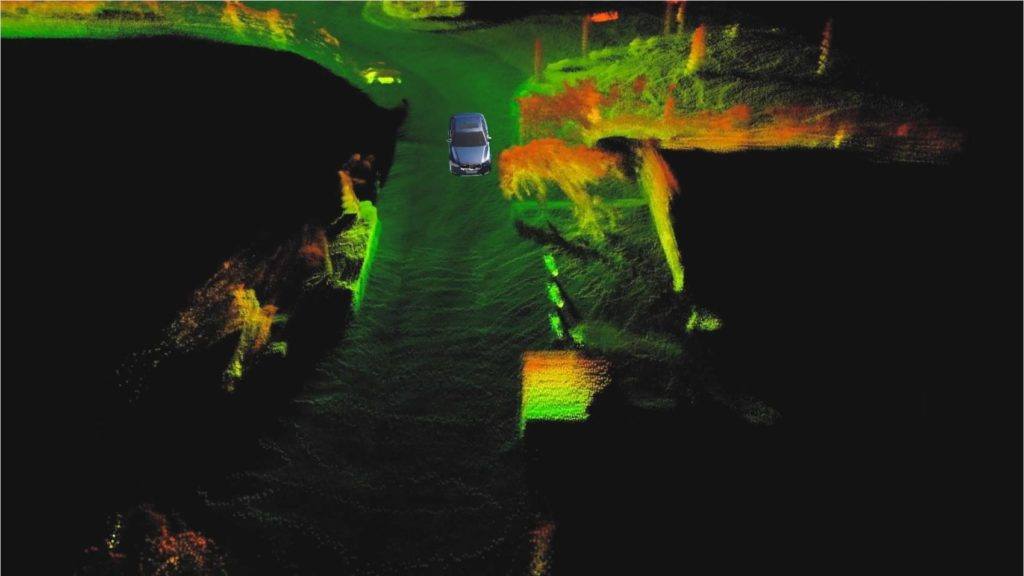Innoviz Technologies recently entered a partnership with Shaanxi Heavy Duty Automobile Co. in Xi’an, China. During the initial stages of this collaboration, InnovizPro LiDAR will be utilized for an autonomous proof of concept at one of the busiest ports in China. Shaanxi’s ultimate goal is the deployment of up to 600 trucks at the location.
“LiDAR is needed in order to help automate the trucks moving containers at the port,” explained Rosana Su, China Country Manager at Innoviz. “This will make the port safer and more efficient, and will also reduce the need for drivers to perform the monotonous tasks of moving containers around the port area.”
“I have been introducing excellent Israeli technologies to Chinese OEMs for many years, and I am very excited about the future of Innoviz’s LiDAR at Shaanxi Trucks and other Chinese OEMs,” said Mr. Shen Yong, Director of Xiamen Zhongxinyun Intelligent Co., the system integrator who is responsible for the sensor fusion aspects of the project.
Who Is Innoviz?
Innoviz manufacturers solid-state LiDAR sensors and perception software for a wide range of applications and industries, including automotive, drone, robotics and mapping. Innoviz has unique origins, being founded by former members of the elite technological unit of the Israeli Defense Forces. The company’s leaders and employees are experts in electro-optics, computer vision, MEMS design, and signal processing among other disciplines.
“I come from a small unit but we were developing very unique hardware and technology – it’s like if MIT had an army,” Omer Keilaf, co-founder and CEO of Innoviz, told Automoblog in a September 2017 feature. “You had to manage sometimes hundreds of people working on a certain project, and all of them needed to see something at the end that works perfectly.”
Who Is Shaanxi Heavy Duty Automobile Co. Ltd?
Shaanxi Heavy Duty Automobile Co. Ltd., better known as Shacman Trucks outside China, is one of the largest truck manufacturers in China. Shaanxi consists of four truck companies, delivering over 150,000 new trucks worldwide each year, including 10,000 for the mining sector. The company is currently on the forefront of autonomous driving research in China.
Five Key Features
The Innoviz LiDAR provides sensing, mapping, and location functions at speeds of under 18 mph in the harbor area. Since the trucks travel along the same roads each day, it’s relatively simple to map the area via localization software. “The system always knows exactly where the truck is driving at any given instant, and where it needs to go, while avoiding potentially dangerous situations,” Su added.
There are five key features of the Innoviz LiDAR system being used in the Shaanxi Trucks at the harbor.
#1: Solid State
In other words, it’s a LiDAR without moving parts that still meets automotive grade standards. “Mechanical LiDAR, in the opinion of industry experts, is not suitable for use in mass-produced vehicles,” Su said.
#2: Low Power Consumption
The LiDAR was designed to be as efficient as possible, reducing the burden on the electrical systems of each truck. “This is also especially valuable in an era when electric vehicles, which need every ounce of electricity to reach an effective distance, are becoming more popular,” Su added.
#3: Smaller Size
Similar to the idea behind power consumption, engineers wanted a design that was less intrusive. “Innoviz’s LiDAR was designed so that it could fit aesthetically into a modern car or truck’s body,” Su explained. “This is different than the rotating mechanical LiDARs, which sit like a bucket on the roof of the car or truck.”
#4: Variable Frame Rate & 3D Images
Innoviz’s LiDAR operates at different frame rates up to 25FPS, and is functional both day and night. “LiDAR sees objects actively in three dimensions, by sending out and receiving back pulses of laser light, and calculating the distance to every spot of the image created,” Su said.
#5: Resolution & Range
The LiDAR’s scanning pattern provides a “pixel size” of 0.1 degrees horizontal x 0.1 degrees vertical. This means it can spot smaller objects from farther away in the busy port. “A very important attribute for automotive and other companies who want to be able to detect cars, trucks, bikes, and other obstacles such as debris on the road,” Su added.

Challenges & Key Considerations
The Innoviz LiDAR system employs computer vision algorithms and neural network software. The combination allows the classification of different objects around the port, helping the trucks determine their “free space,” or areas that are safe to drive because they are free from vehicles, workers, and other obstacles. One of the challenges in this proof of concept partnership is the autonomous loading and unloading of containers in the port area, especially on a busy day.
“Drivers are human, and get tired and distracted, especially when doing repetitive work,” Su said. “If the work is automated, then the drivers only need to oversee the operation, either inside the trucks or in a control room.”
Chinese legislation stipulates that by May of this year, all trucks are required to have at least two on-board ADAS technologies: a mandatory camera and either a radar or LiDAR system. Since the trucks used at the port have different dimensions and specifications than road cars, it has been a learning experience all around.
“Trucks have their own different set of work environment characteristics, LiDAR installation configurations, and other parameters,” Su added. “Nevertheless, Innoviz always learns many lessons from each and every customer deployment, and will continue to learn and synthesize these lessons learned for its projects in passenger vehicle LiDAR.”
Source: Innoviz Technologies.


